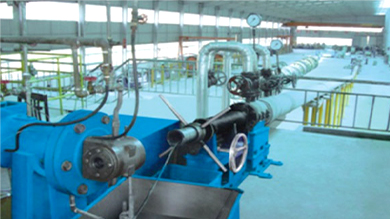Sep . 23, 2024 05:52 Back to list
foot valve
Understanding Foot Valves Essential Components in Fluid Management
Foot valves are crucial components in various industries, primarily used to maintain the prime in suction lines for pumps. As the name implies, a foot valve is installed at the bottom of a pump's suction line, often submerged in water or other fluids. This article will explore the significance, functionality, and applications of foot valves in fluid management systems.
At its core, a foot valve's primary function is to prevent the backflow of liquids. When a pump stops operating, the foot valve closes due to the weight of the water above it, creating a barrier that prevents the liquid from flowing backward. This mechanism ensures that the pump doesn't lose its prime, which can lead to operational inefficiencies and potential damage.
The design of foot valves typically includes a strainer, which filters out debris and prevents clogging
. This is particularly important in applications where the fluid may contain sediments, as blockages can significantly impair the pump's performance. Different materials are used for foot valves, including brass, stainless steel, and PVC, each offering distinct advantages based on the fluid's characteristics and the environment of use.foot valve

Foot valves are widely used in various applications, from agricultural irrigation systems to industrial water supply networks. In irrigation, they help maintain a continuous flow of water, allowing for efficient crop watering without the risk of pump dry running. In industrial settings, foot valves are vital in maintaining fluid dynamics within cooling systems and other processes.
One of the critical aspects when selecting a foot valve is ensuring the right size and type for the specific application. Factors such as flow rate, fluid type, and working environment must be considered. Additionally, regular maintenance is essential to ensure optimal performance. Over time, foot valves can wear out due to corrosion or debris accumulation, necessitating periodic inspection and replacement.
In summary, foot valves play a pivotal role in managing fluid systems by preventing backflow and maintaining a stable flow of liquids. Their application spans multiple industries, making them an indispensable tool in fluid management. Understanding their functionality and maintenance needs is essential for anyone involved in systems reliant on pumps and fluid transfer. As technology evolves, innovations in foot valve designs and materials continue to improve efficiency, making these components even more effective in various applications.
Share
-
Reliable Wafer Type Butterfly Valves for Every IndustryNewsJul.25,2025
-
Reliable Flow Control Begins with the Right Ball Check ValveNewsJul.25,2025
-
Precision Flow Control Starts with Quality ValvesNewsJul.25,2025
-
Industrial Flow Control ReliabilityNewsJul.25,2025
-
Engineered for Efficiency Gate Valves That Power Industrial PerformanceNewsJul.25,2025
-
Empowering Infrastructure Through Quality ManufacturingNewsJul.25,2025